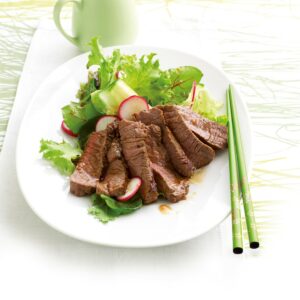
Top tips for travelling and eating when you’re gluten-intolerant.
It’s the holiday season, and we’re all going off in different directions. Eating on the road can be difficult when you’re gluten-intolerant, so here are a few tips and tricks for successful travelling, no matter which form of transport you choose.
Planes
Here’s my take on gluten-free meals on airplanes. They’re like most airline food – nothing to write home about. I’ve done a lot of travelling this year for work, and experience has taught me that British Airways do a very poor gluten-free meal. I sent them a review of their food and didn’t hear anything back, which is generally a good indicator of how much they care. Qantas and Air New Zealand are better, they at least have some variety to their meals and the flavours are pretty good. Watch out for breakfasts, as these tend to contain eggs. Also, for some strange reason, they never give you yoghurt with a gluten-free breakfast and you have to ask for it. The breakfast ‘snacks’ you get from time to time are not pleasant (especially compared to the soft and tasty muffins and pastries your fellow travellers will be eating). And I have no idea about the cross-contamination in the kitchens at SkyChef and the like. The best piece of advice I can give is to take plenty of your own gluten-free snacks – muesli bars, crisps, the occasional biscuit, fruit (just remember to eat this or dump it before you clear customs) so that if you’re on a long-haul flight and the food is no good, you have something to eat.
Just a note about being in transit internationally – check out what eating places are at the airport before you get there. Most international airports offer sushi, but it is important to check whether they’ve used any gluten-containing product in their rice, and of course, the soy sauce is not normally gluten-free. LA International Airport has a Mexican café which looked all good. Heathrow was a nightmare. San Francisco and Washington (Dulles) weren’t too bad, but Pittsburgh was dire (odd really, because Pittsburgh had otherwise been a gluten-free Mecca for me). Sydney airport has both sushi and an excellent health food café called Santos. Auckland International airport is very good, and of course both Auckland and Wellington domestic terminals have Wishbone cafés.
Trains (and buses)
The food for sale on trains is very limited and very rarely includes anything gluten-free. Be prepared to take your own meals. With bus travel, they tend to stop at small roadside cafés, which often have very nice food, but not much that is gluten-free, so the same applies.
Automobiles
This is by far the easiest option for the gluten-free traveller, as you can take your own food and you can plan your stops to find somewhere that is going to have a good selection of gluten-free food. Utilise Google and other people’s recommendations here. If you’re ‘picnic by the roadside’ people, you might want to consider crackers and cheese, hummus and fruit rather than sandwiches.
All-in-all, I think the thing to be most prepared for when you’re travelling is that there may be NOTHING you can safely eat if you’re gluten-intolerant. Always make sure you take enough food for one meal at least, even if it’s a little boring. Where you can, prepare in advance by using travel websites or the resources of international gluten-free bloggers and the like to pinpoint gluten-free-friendly eating establishments. Google is your friend when you’re travelling and have food restrictions.
Thanks for reading my first few blogs. I look forward to sharing more with you in the New Year. Keep an eye out for school lunchboxes, tuck shop suggestions, gluten-free cooking classes and reviews of eating establishments like Nostalgia (high tea here I come!). I wish you all a happy and safe holiday, with many sunny days, holiday projects completed and a good period of rest and relaxation to unwind after the stresses of the year. Merry Christmas and a happy New Year!
Lisa
For those wanting more information on coeliac disease, check out the NZ Coeliac Society website www.coeliac.org.nz.
This blog is the opinion and experiences of its author and should not be taken as medical or dietetic advice. Healthy Food Guide has not verified the content and cannot endorse any advice given. Healthy Food Guide recommends seeking professional health advice for specific complaints or symptoms.
www.healthyfood.com










